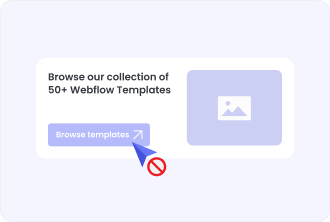Error of Commission Definition

Error of Commission can depict a mistake that occurs when a program stops operating, in other words it can appear when the wrong data is being input, failing to do the action right. Speaking of examples, it can occur when a customer makes a purchase and it winds up with an error message.
If you Google this term, you will find only a financial definition, and that’s right since Error of Commission refers to a situation when accounting data is missed through existing registration as an upshot. However, this terminology also refers to information technology and we are going to break it down further in this explanation.
Types of errors of commission in software development
A misalignment of the action and its execution can happen at any stage of software creation and utilization, touching the inner and outer workings of a program, some visible to the eye as they touch the aspects related to the client side of a utility, others hidden, connected to the server. Below, we outlined some typical errors of commission. We classified them to the field they appear in:
- UX failure. The kinds of mistakes that have relation to the user experience can be the following: design that misleads (for example, instead of buying a good, your client deletes it from their cart, CTAs that don’t work, inconsistent designs, and wrong titles.
- Buggy software. Speaking of the code, it appears as non-working functions or results that are impossible to predict, slow performance because of poor algorithms or the need for an enhanced quantity of resources, and downtimes when the operations stop.
- Failed cybersecurity. A developer’s wrong actions can lead to a series of missteps that multiply the possibility of threats breaking the defense of an app. The variations of errors range from giving full access to users who must have limited entry to sensitive information. It also includes leaks of data, weak protocol configurations, and leaving backdoors.
- Testing inaccuracies. By inspecting outputs, a programmer can tap into several wrongdoings. First, they can misreport the outcomes of the test so it won’t be reliable. Second, the data chosen for evaluation can be wrong.
How to detect the errors of commission?

Not every case of an incorrectly made action is obvious. A developer could forget to set the security configurations after the testing or make a wrong connection with a database, but the consequences come when a data leak happens or when a website owner finds out that the saved information doesn’t have any value while the valuable user logs are lost.
Here, we explained how to identify such inaccuracies:
First and foremost, make sure that your team reviews code thoroughly to avoid incorrect implementation. Such approaches like inspection with checklists when programmers leave no stone unturned regarding every facet of design and software, considering their conformity to the standards of performance, usability, reliability, and so on.
Second, conducting code examination is a crux of the matter to ensure that the all-encompassing inspection is done. Executors have to test each unit, adopting various scenarios to see that there’s nothing that can be a potential threat.
Third, a thorough evaluation must include runtime testing to check an application in real-life conditions. It allows accomplices to spot weaknesses and unexpected behavior during usage of the software.
Last but not least, you need to pay attention to what users tell you about your applications. If they frequently write about slow performance, interrupted sessions, poor user experience due to errors, you will be able to react on time. Feedback evaluation is the mechanism that will help you fix problems after the launch of the utility.
How to avoid the appearance of errors of commission
The best way to secure good results without downtowns and cost losses is to take measures to prevent errors from appearing.
Top IT companies in London stick to the approach of right responsibility delegation. They will assign a task to an executor in accordance with their skills and experience. For example, if a developer’s level is junior, they won’t be tasked to perform complex testing or write code for central features. Depending on the scale and complexity of a function, an appropriately tested specialist is assigned.
Another methodology that will help assure that code works properly is to follow the best practices of code review. Automation of assessment will reduce the possibility of deleting or changing functions during evaluation. Complying with the standards is the play-by-book strategy that allows testers to tap into reliable examination tactics.
In addition to the mentioned practices, it is significant to gather clear documentation during development processes. All the specifics of repetitive functions and tasks should be described extensively to ensure that future updates and other configurations won’t break the logic of functions.
Finally, each respectable offshore app development company fosters a sensible attitude in relation to work in their employees, reminding them about the paramount things like double-checking the API integrations, information entry, features compatibility, and attention to detail.